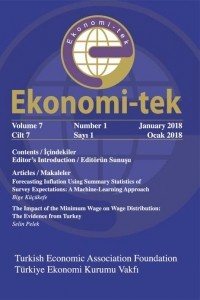
Ekonomi TEK
Yazarlar: Cem BAŞLEVENT
Konular:İktisat
Anahtar Kelimeler:Life satisfaction,Work-life conflict,Turkey,European Social Survey
Özet: Using data drawn from the 2004 European Social Survey, we examine the determinants of the life satisfaction of employees in Turkey. The data reveal that the majority of Turkish wage and salary earners are either under- or overemployed. About half of Turkish workers have to work longer than they desire, so, unsurprisingly, the share of workers who say they are pleased with their work schedules is only 22%. Gender turns out to be closely linked with the hours-mismatch status, as the level of over-employment is eight percentage points higher among female workers than male. Ordered probit-model estimates reveal that over-employment (measured as the difference in the actual and preferred weekly number of hours) has a negative impact on wellbeing. We failed to turn up a statistically significant finding for underemployment, which we attribute to the small sample size. We also find no statistically meaningful difference in the impact on male versus female employees of the work-hours mismatch. This suggests that the gender differences that would have been expected in this context are already incorporated into the respondents' subjectively determined desired hours of work. In addition, we find that family-to-work conflict is less common, but has a larger impact on well-being than work-to-family conflict.